The Science Behind Pixar
The newest exhibit at Chicago’s Museum of Science & Industry is a Disney-lovers delight. The Science Behind Pixar details the science behind the making of Pixar movies. As a lover of these movies since the beginning, I never really put much thought into what goes into making them. I figured they drew a couple pictures, transferred it to a computer and the computer did the rest. Little did I know that it’s more than just some computerized drawings. There’s clay modeling. There is math… and a lot of it. There is innovation. And similar to live-actions movies there is riggings, sets & cameras and lighting. Who knew?!
Museum of Science & Industry
Before we get into all the cool interactive displays in the Science Behind Pixar exhibit, you have to know the Chicago Museum of Science & Industry is chalk full of other incredible displays. From a full-sized Boeing 727 hanging off the third story balcony all the way to the basement with an actual German U-Boat.
Boeing 727
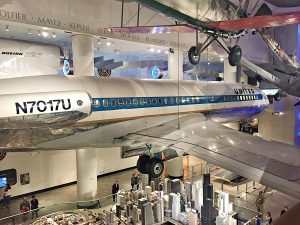
The Boeing 727, donated to the museum by United Airlines, was retrofitted to give visitors an up close and personal view of the inner workings of a passenger airplane. As amazing as the display is, it’s the fact that it’s hanging off the wall that is probably the most interesting. I highly recommend taking a few minutes to watch the movie (located near the tail of the plane) where they detail how they brought the plane to the museum, inside the building then hung it from the balcony.
Colleen Moore’s Fairy Castle
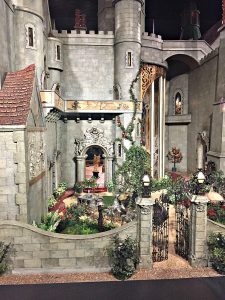 Colleen Moore, one of the most famous actors of the 1920s, was a lifelong fan of dollhouses. Therefore, in the late 1920s, she commissioned the building of her own dollhouse which she called Fairy Castle. At the time it was built, it cost $500,000, which in today’s dollars would be a whopping $7,000,000. The elaborate construction took 100 workers and features over 1,500 miniatures with immaculate detail. Moore, who passed in 1988, donated the castle to the Museum of Science & Industry in 1949.
Colleen Moore, one of the most famous actors of the 1920s, was a lifelong fan of dollhouses. Therefore, in the late 1920s, she commissioned the building of her own dollhouse which she called Fairy Castle. At the time it was built, it cost $500,000, which in today’s dollars would be a whopping $7,000,000. The elaborate construction took 100 workers and features over 1,500 miniatures with immaculate detail. Moore, who passed in 1988, donated the castle to the Museum of Science & Industry in 1949.
As much as Disney fans will enjoy the Science Behind Pixar exhibit, there is much Disney-dom to enjoy in the Fairy Castle as well. This includes a tiny painting done by Walt Disney himself. There are also original works of art done by relevant artists of the time and the tiniest Bible ever written which dates back to 1840. Each room features artifacts from some of the most famous tales in history such as Sleeping Beauty, the Knights of the Round Table, Cinderella, Robinson Crusoe, Gulliver’s Travels, Goldilocks, and characters from Grimm Brothers’ fairytales.

Giant Dome Theatre
Similar to Disney’s Soarin’ Over the World attraction, the Giant Dome Theatre feature a curved screen. The two movies currently playing are Oceans: Our Blue Planet and The Story of Earth. We saw Oceans: Our Blue Planet which shares the story of the world’s seas from their coastal shallows to the more mysterious worlds of the deepest depths of the ocean.
Transportation Gallery

Beneath the Boeing 727 is a full-sized coal locomotive. This is part of a transportation display celebrating the first trains to traverse the country from Chicago to Seattle. Behind the locomotive is an intricate train set featuring scale models of Chicago and Seattle separated by the western mountains with the model train set connecting the two cities. Containing more than 20 trains, there is so much detail in this display you will want to spend some time really perusing this exhibit.
Science Storms
The Science Storm exhibit highlights our greatest forces of nature such as tornadoes, tsunamis, fire and lightening (with a gigantic Tesla coil). Interactive exhibits include standing in the middle of a tornado and creating a tsunami.
German U-505
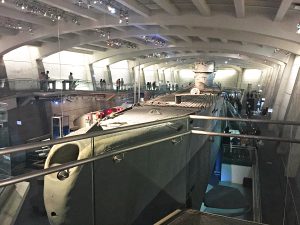
When you think you have seen it all, located in the basement is the famous World War II German U-505 submarine captured by the US Navy in June 1944. It’s literally in the building. It’s got to be one of the most insane things I have ever seen… a 251-foot U-Boat… inside a room. For an extra fee, you can even step aboard and tour the U-Boat.
YOU! The Experience
This exhibit takes an interesting look at the human body from conception to displays of the adult body systems. There are also interactive exhibit dealing with heart rate, eyesight and mind relaxation. It really is remarkable when you see all the body’s systems up close and personal.
The Science Behind Pixar Exhibit
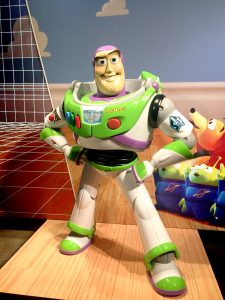 The Science Behind Pixar exhibit begins with a short movie where Fran, a Technical Artist, and Alex, a Story Artist, take you on a guided tour of the Pixar Campus in California. They begin with the Story & Art department where the story starts to come to life under the hands of an amazing group of artists. It then ebbs and flows through editorial, modeling, rigging, surfaces, sets & camera, animation, simulation, lighting and finally rendering.
The Science Behind Pixar exhibit begins with a short movie where Fran, a Technical Artist, and Alex, a Story Artist, take you on a guided tour of the Pixar Campus in California. They begin with the Story & Art department where the story starts to come to life under the hands of an amazing group of artists. It then ebbs and flows through editorial, modeling, rigging, surfaces, sets & camera, animation, simulation, lighting and finally rendering.
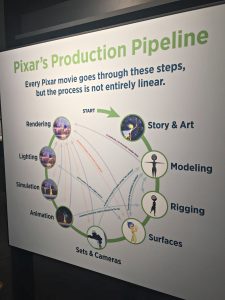
The exhibit, which takes up two rooms at the museum, guides visitors through each phase of production with interactive displays. For example, in modeling, visitors can rotate a 3D image while in sets & camera which show reveal the complexity of creating depth in a scene.
 From the depiction of hair in Monster’s Inc. to the flow of water in Finding Nemo, Pixar has been a leader in animation breakthroughs. These breakthroughs really have less to do with old-school animation and more to do with math. Pixar animators take their 3D models and position them into key poses then let a complication system of algorithms called Splines fill in the transitions.
From the depiction of hair in Monster’s Inc. to the flow of water in Finding Nemo, Pixar has been a leader in animation breakthroughs. These breakthroughs really have less to do with old-school animation and more to do with math. Pixar animators take their 3D models and position them into key poses then let a complication system of algorithms called Splines fill in the transitions.
Believe it or not, it’s the last step in the movie making process takes the longest. Each second of the film we see requires 24 frames. Here’s where it gets crazy: each of those 24 frames takes approximately 26 hours to render. Yes, I said HOURS! For my stat loving friends out there, let’s do the math:
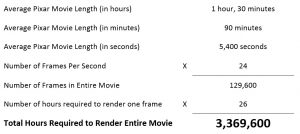
Ok, so obviously it doesn’t take 385 years to make one Pixar movie, so how do they do it? Pixie Dust? Magic? The Ghost of Walt Disney? Nope. They have something called Render Farms, which contain as many as 12,500 CPUs, all working in conjunction to get the job done.
I highly recommend this exhibit for both Disney fan and the non-initiated. There is way more to this exhibit then copious amounts of Pixar characters. There is math and science galore.
Do you want to see the Science Behind Pixar for yourself? You better hurry. The exhibit will only be at the museum until January 9, 2019.
*~*~*~*~*~*~*~*~*~*~*~*~*
Sue Nowicki is an alumna of the 2014/15 Disney Parks Moms Panel. She is a team mom extraordinaire who has filled her time serving as secretary, navigator, head cheerleader, treasurer, athletic trainer and team psychologist for her daughter’s travel sports team for 10 years before becoming a team owner in 2015. You can follow her on Twitter @TeamMom365.
You can follow our pixie-dusted journey here: Facebook, Twitter, Instagram and Pinterest for more great Team Mom Lifestyle content.
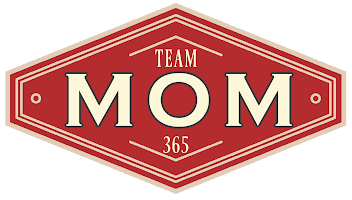

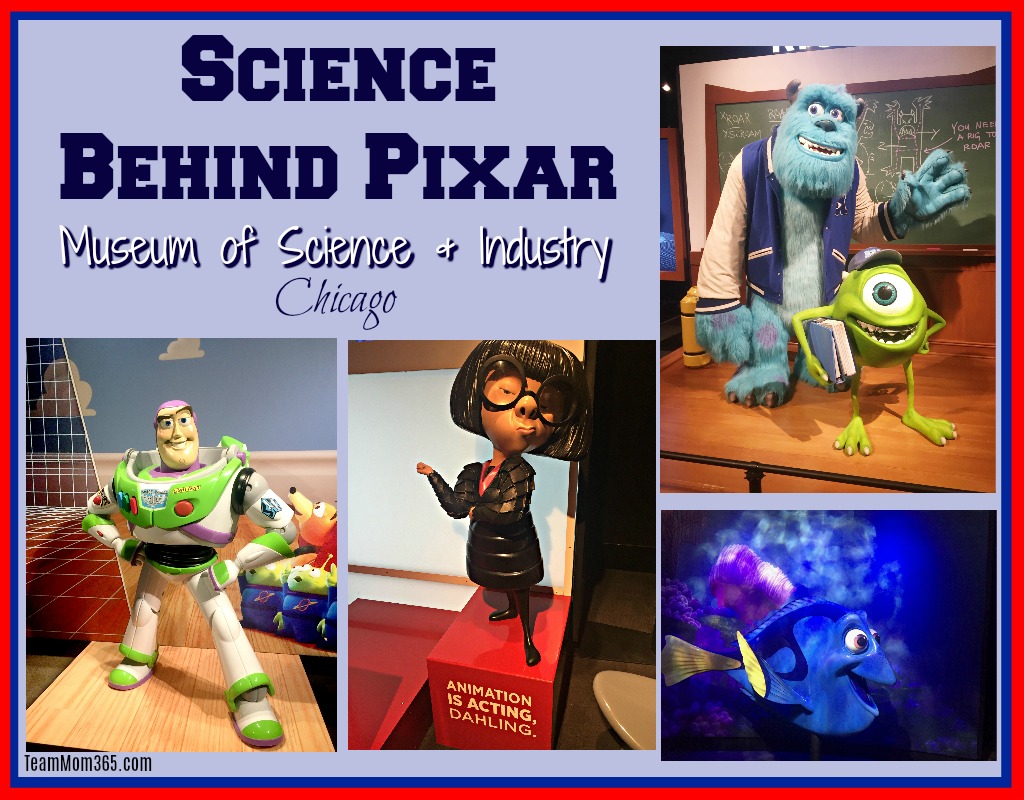
I LOVE science museums and then you add in DISNEY?! My dream! Hmm… I may need to go to Chicago!